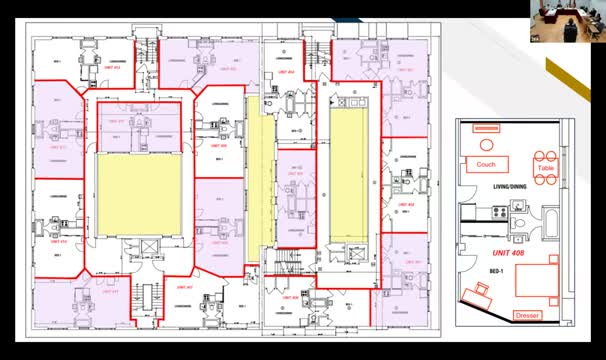Troy IDA considers tax abatement for new senior housing development project
April 15, 2025 | Troy, Rensselaer County, New York
This article was created by AI summarizing key points discussed. AI makes mistakes, so for full details and context, please refer to the video of the full meeting. Please report any errors so we can fix them. Report an error »

The Zoning Board of Appeals meeting held on April 2, 2025, in Troy, NY, focused on significant developments in local housing projects and tax implications for new constructions. The meeting began with a call for public comments, but no responses were received from attendees or online participants.
One of the primary discussions revolved around a project involving Russell Sage College. A board member inquired whether the project would receive a tax abatement for property and school taxes. The project representatives clarified that while the building would return to the tax rolls, they were negotiating with the Troy Industrial Development Agency (IDA) for a gradual ramp-up of tax payments over the first 15 to 20 years. This approach is standard for similar projects in the city, allowing for improved cash flow during the initial phases of development.
The board then moved on to discuss an area variance request for a new project proposing 73 senior affordable apartments at 2751 Fifth Avenue. The applicant sought several variances, including an increase in the maximum height from three to five stories and relief from parking zone setbacks. The planning board is currently the lead agency for this project and has not yet issued a negative declaration, meaning the Zoning Board cannot take action until that determination is made.
Samik Gupta, representing 5 Corners Development, emphasized the project's alignment with city goals to revitalize blighted properties and address the significant demand for senior housing in the area. He noted that the Troy Housing Authority has over 2,000 individuals on waiting lists for senior housing, highlighting the urgent need for such developments.
The meeting concluded with a motion to approve the area variance for the Russell Sage project, which was passed unanimously by the board. The discussions underscored the ongoing efforts in Troy to enhance housing options and manage tax implications effectively as the city continues to develop its infrastructure and community resources.
One of the primary discussions revolved around a project involving Russell Sage College. A board member inquired whether the project would receive a tax abatement for property and school taxes. The project representatives clarified that while the building would return to the tax rolls, they were negotiating with the Troy Industrial Development Agency (IDA) for a gradual ramp-up of tax payments over the first 15 to 20 years. This approach is standard for similar projects in the city, allowing for improved cash flow during the initial phases of development.
The board then moved on to discuss an area variance request for a new project proposing 73 senior affordable apartments at 2751 Fifth Avenue. The applicant sought several variances, including an increase in the maximum height from three to five stories and relief from parking zone setbacks. The planning board is currently the lead agency for this project and has not yet issued a negative declaration, meaning the Zoning Board cannot take action until that determination is made.
Samik Gupta, representing 5 Corners Development, emphasized the project's alignment with city goals to revitalize blighted properties and address the significant demand for senior housing in the area. He noted that the Troy Housing Authority has over 2,000 individuals on waiting lists for senior housing, highlighting the urgent need for such developments.
The meeting concluded with a motion to approve the area variance for the Russell Sage project, which was passed unanimously by the board. The discussions underscored the ongoing efforts in Troy to enhance housing options and manage tax implications effectively as the city continues to develop its infrastructure and community resources.
View full meeting
This article is based on a recent meeting—watch the full video and explore the complete transcript for deeper insights into the discussion.
View full meeting
